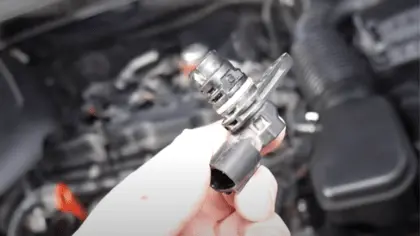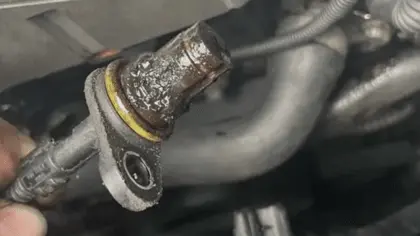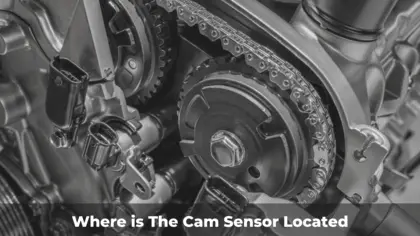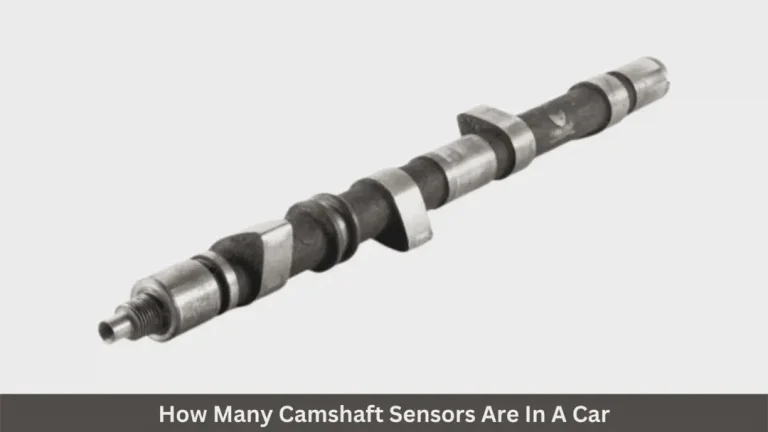A car’s camshaft sensors are a crucial component. The focus of this content will be on all the information you need to know about camshaft sensors, and How Many Camshaft Sensors Are In A Car will be the discussion topic. Although the four sensors used on the automobile model vary depending on whether it has a V6, V8, or V12 engine, we will provide a general overview of the four sensors.
A modern car contains more than 20 sensors that handle everything from airbags to entertainment. The camshaft sensor is usually determined by the model of your car, with most cars having four camshaft sensors on each camshaft to help the engine’s combustion run smoothly. Although automobiles are designed for four sensors, some engines only have one or two.
It is necessary to read the entire article in order to achieve a thorough understanding of each sensor. Anyway, let’s check out the sensor placements on the vehicle and more about their performance.
How Many Position Sensors Are in a Car?

Actually, there are over 70 sensors in an entire modern car. However, we frequently found four different types of camshaft position sensors for each engine camshaft in the vehicle. They are placed across from one another, close to the camshaft actuators, on the front of the cylinder heads.
We have discovered magnet coils for pickup, Hall influence detectors, magneto-resistive components or MRE, or optical sensors for car crank and camshaft sensors. It basically ranges from zero to four depending on the engine.
Related camshaft position sensors: can low oil cause camshaft position sensor?
Do Cars Have 2 Camshaft Sensors?
Your car might just have two camshaft sensors, and that is quite common. One sensor might also be used. Basically, the camshaft helps your car maintain smooth combustion by identifying the exact placement of the camshaft in your engine.
Some engines, especially those that use Hall category sensors, use the same sensor in either configuration. Others incorporate cam and crank sensors that are technically unique.
What is a cam sensor on a car?
An electrical device called a camshaft position sensor monitors the position and speed of the camshaft and transmits that signal to the engine control unit of the automobile (ECM). The sensor gives the engine management the flexibility to pinpoint exactly where the crankshaft drive is located.
The speed and location of the camshaft are determined by one or more camshaft position sensors. One cam sensor is used in many modern vehicles with changeable valve timing for every cam sensor in the engine. In essence, the Cam Sensor is a new component that substitutes the plastic sensor with flat sides with a sensor and a metal body.
Types of Camshaft Sensor

Modern cars have 4 types of camshaft sensors, and they are:
- Magneto pickup coils
- Hall-effect sensor
- MRE sensors, or magnetoresistive component detectors
- Optical sensor.
Are All Camshaft Sensors the Same?
Crankshaft and camshaft position sensors differ slightly from one another. The crank sensor is installed on the crankshaft, whereas the cam sensor is mounted on the camshaft. We use these sensors to determine the engine rpm.
The cam sensor generally serves as a backup to the crank sensor. The car’s crankshaft sensor is used to identify where the crank and piston are located, while the camshaft sensor is utilized to discover where the camshaft sits.
Where is The Cam Sensor Located?

We actually discover the right location of the camshaft according to the car’s brand, type, engine, and overall system setup. However, it is usually positioned just above the notched ring of the camshaft.
Generally, the camshaft sensor is located close to the top of your car’s engine, engine block, or timing cover, or it could be next to one or both heads, but other automobiles have it installed behind the timing cover.
How to Determine the Number of Camshaft Sensors?
Finding the camshaft sensor placement to assure the efficiency of the engine is not a tough thought. Simply enter the make and model of the automobile to find manual instructions online. By entering the car identification number, you can perform a search using the model, year, engine type, and size.
You’ll see that a modern one has one or two sensors to keep the intake and exhaust valves open and closed. We discovered that a SOHC engine with a single overhead camshaft has a single camshaft on which all the cylinders are lined up.
V or flat cylinders also feature two banks and two camshafts. However, the DOHC engine has four camshafts in total, two per bank. You can therefore have a 4, 6, or 8-cylinder setting.
The Principle of Camshaft Position
The Hall principle governs the functionality of the camshaft sensor. It inspects your sensor’s ring gear. Normally, the Hall voltage of the Hall IC inside the sensor head changes as the ring gear rotates. This voltage change is sent to the control unit, and it’s measured and processed when you need the necessary data.
What is the cost of replacing a camshaft sensor?
You should budget between $95 and $200 to replace a camshaft position sensor. The cost for parts alone ranges from $25 to $100. For a qualified fix, service prices will be around $70 to $100. This pricing range is set by national averages for all vehicles and excludes taxes, model and make, and charges.
FAQ
1. Can a car run without a camshaft position sensor?
Yes, you can drive the car without the cam sensor until the computer isn’t receiving a signal from the crank or camshaft sensors. However, if the camshaft sensor fails, the engine won’t start because the data signal will ultimately get so poor that the engine control module will turn off the fuel and ignition distribution.
2. Can you drive with a faulty cam sensor?
Yes, you can still drive with a faulty sensor, but your mileage will be affected. Additionally, you’ll eventually discover that your fuel usage is rising or that you might lose your sensor system and need to replace it.
3. Do old cars have camshaft and crankshaft position sensors?
Actually, the answer is both yes and no because some engines, notably Hall-type sensors, operate the same sensor in either configuration. The cam sensor serves as a backup and the crank sensor is the primary sensor in most cars, especially in the case of modern cars.
4. Why is a camshaft sensor used in a CRDI engine?
The term “direct injection” of fuel into the cylinder of a diesel engine is referred to as “common rail direct injection” or “CRDI. In general, the CRDI engine manages the timing of the ignition switch and other engine parameters, while the CAM sensor defines what injector in a progressive system should be triggered.
Concluding Section
We hope you understand the necessity of camshaft sensors in your car. So, the thing is, according to the car model and system, your automobile will have one, two, or at best four camshaft sensors. All of them are interconnected with your car’s engine.
We also mentioned all the types of sensors and how they operate. So, there should be no question regarding How Many Camshaft Sensors Are In A Car as we have given complete details on your query. However, if you feel confused about the camshaft sensors, feel free to share your query in the comment box. We will come back with the appropriate answer.

